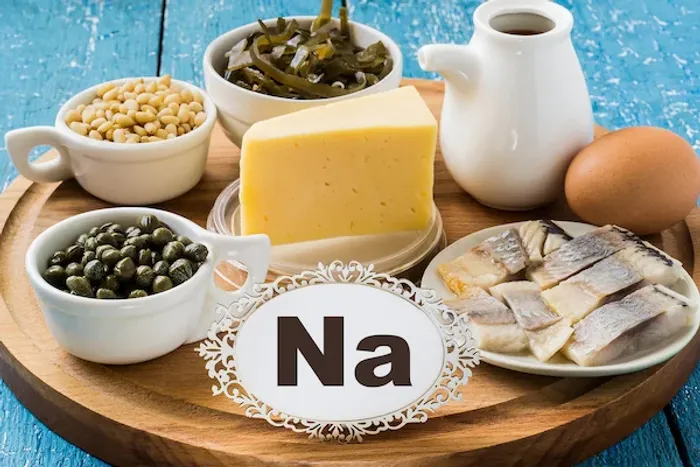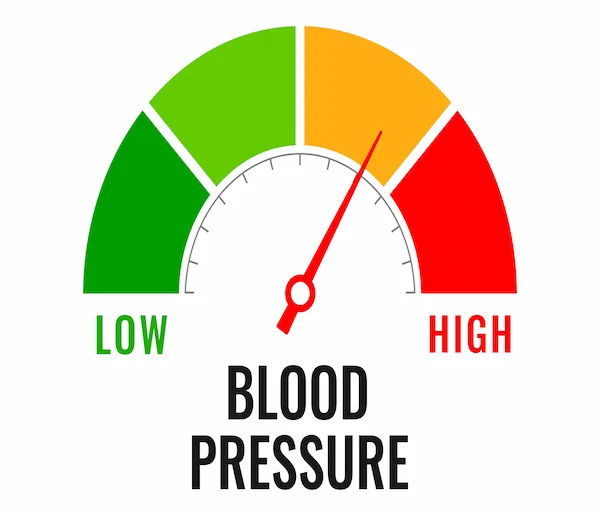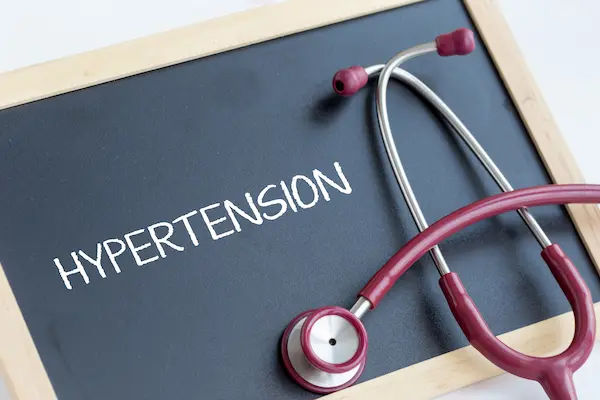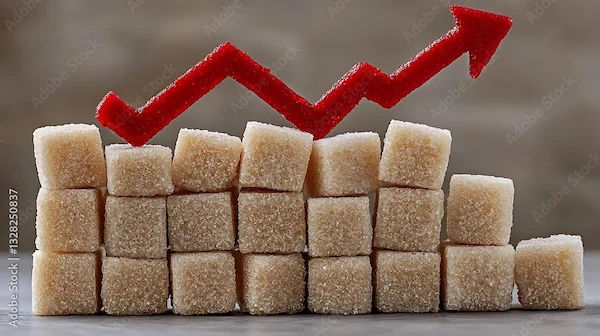Your Guide to Hidden Sodium in "Healthy" Packaged Foods
Discover the hidden sodium in so-called healthy packaged foods. Learn how to read nutrition labels, spot salty culprits, and make smart low-sodium swaps for better health.

Written by
Last updated on 13th Oct, 2025

Introduction
You’re making a conscious effort to eat healthily. You reach for whole-grain bread, a light salad dressing, and a bag of veggie chips, confident in your nutritious choices. But what if these very foods were secretly undermining your health goals? Welcome to the world of hidden sodium. While we often associate high salt levels with obvious culprits like chips and fast food, sodium lurks in astonishing amounts in many packaged foods marketed as "healthy." This excess sodium is a primary contributor to high blood pressure, increasing the risk of heart disease and stroke. This guide will empower you to become a savvy label reader, exposing the hidden sodium in your pantry and providing practical strategies for making truly healthy choices. We’ll uncover the common food categories that are surprisingly high in salt, teach you how to decipher nutrition labels like a pro, and share delicious, low-sodium swaps to protect your well-being without sacrificing flavour.
Why Should You Care About Hidden Sodium?
Sodium is an essential mineral that helps maintain fluid balance, supports nerve function, and enables muscle contraction. However, the modern diet provides far more than our bodies need. The problem with hidden sodium is that it accumulates silently throughout the day, often from foods you wouldn't suspect, making it easy to exceed recommended limits without ever touching a salt shaker.
The Silent Impact of Sodium on Your Body
When you consume too much sodium, your body holds onto extra water to dilute it. This increases the total volume of blood in your bloodstream, which in turn raises the pressure on your artery walls—leading to hypertension, or high blood pressure. Over time, this constant pressure can damage blood vessels, straining your heart and kidneys. It's a major risk factor for heart attack, stroke, and kidney disease. The insidious nature of hidden sodium means that these effects can develop gradually, without any immediate symptoms.
How Much Sodium is Too Much? Understanding the Guidelines
The American Heart Association recommends no more than 2,300 milligrams (mg) of sodium per day, with an ideal limit of 1,500 mg for most adults, especially those with high blood pressure. To put this in perspective, just one teaspoon of table salt contains about 2,300 mg of sodium. When you consider that a single serving of some canned soups or frozen meals can contain over 1,000 mg, it becomes clear how quickly the total adds up. Monitoring your intake is crucial for long-term heart health.
The Health Halo Effect: When "Healthy" Labels Hide a Salty Secret
The "health halo" is a cognitive bias where a positive perception of one attribute (e.g., "low-fat," "organic," or "gluten-free") leads us to assume the entire product is healthy, overlooking other negative aspects like high sugar or, in this case, high sodium. Manufacturers often add extra salt to low-fat products to compensate for the loss of flavour that fat provides.
Decoding Marketing Buzzwords: "Low-Fat," "Whole Grain," and "Organic"
A "low-fat" yoghurt or a "whole-grain" cracker isn't automatically low in sodium. In fact, they might contain more salt than their regular counterparts to make them more palatable. "Organic" sea salt is still sodium chloride and impacts your body in the same way as regular table salt. Don't let these buzzwords distract you from the nutrition label, which tells the real story.
Top 10 Surprisingly Salty "Healthy" Foods
Here are the most common offenders where hidden sodium loves to hide. This list will help you identify healthy foods high in sodium that you might be consuming regularly.
Health topic carousel:
Doctor's speciality: General Practitioner
Text: Consult a Specialist for the best advice
The Breakfast Betrayal: Cereals, Granola, and Instant Oatmeal
While some cereals are sugary, others, especially bran flakes or "heart-healthy" varieties, can contain 180-300 mg of sodium per serving. Flavoured instant oatmeal packets are also major culprits, with some exceeding 250 mg per packet.
The Sandwich Saboteur: Breads, Wraps, and Bagels
Bread is a leading source of dietary sodium because we eat so much of it. A single slice can have 150-200 mg. That means a simple sandwich can contribute 400 mg of sodium before you add any fillings! Bagels and tortilla wraps often contain even more.
The Salad Spoiler: Dressings, Canned Beans, and Pre-Cooked Chicken
A seemingly virtuous salad can become a sodium bomb. Two tablespoons of bottled salad dressing can pack 300-500 mg. Canned beans, a healthy protein source, are often packed in salted water (rinsing them can reduce sodium by up to 40%). Pre-cooked grilled chicken strips are notoriously high in salt as a preservative.
The Snack Trap: Veggie Chips, Rice Cakes, and Pretzels
Veggie chips may sound better than potato chips, but they are often just as high in sodium. Rice cakes, a diet staple, can have 50-100 mg each, and pretzels are essentially salted dough. Always check the label for low sodium packaged foods in the snack aisle.
The Condiment Conundrum: Sauces, Marinades, and Spice Blends
Ketchup, soy sauce, teriyaki marinade, and even mustard add significant sodium. A tablespoon of soy sauce can contain about 900 mg. Pre-made spice blends often have salt as their first ingredient. This is a key area for reducing sodium intake from processed foods.
Become a Sodium Detective: A Step-by-Step Guide to Reading Labels
Empowerment comes from knowledge. Here’s how to analyse any packaged food.
Step 1: Find the "Sodium" Line on the Nutrition Facts Panel
Look for the milligrams (mg) of sodium per serving. This is the most straightforward number.
Step 2: Decipher the % Daily Value (%DV)
The %DV is your best friend for quick assessment. As a rule of thumb:
5% DV or less is low in sodium.
20% DV or more is high in sodium.
Aim to choose products with a lower %DV for sodium throughout the day.
Step 3: Scan the Ingredient List for Sodium's Aliases
Sodium can hide under many names. Watch out for:
Monosodium glutamate (MSG)
Baking soda (sodium bicarbonate)
Disodium phosphate
Sodium nitrate/nitrite
Sodium alginate
Sea salt (this is not a healthier alternative in terms of sodium content)
Smart Swaps: How to Reduce Your Sodium Intake Without Sacrificing Flavour
Reducing sodium doesn't mean eating bland food. It's about making smarter choices and getting creative in the kitchen.
DIY Alternatives for Common High-Sodium Foods
Salad Dressing: Whisk together olive oil, vinegar or lemon juice, and your favourite herbs.
Marinades: Use citrus juices, garlic, onion, and pepper instead of bottled sauces.
Beans: Choose low-sodium or no-salt-added canned varieties, or cook dried beans from scratch.
Using Herbs, Spices, and Citrus to Enhance Flavour Naturally
Experiment with salt-free flavour boosters like rosemary, thyme, smoked paprika, cumin, garlic powder (not garlic salt), onion powder, and black pepper. A squeeze of fresh lemon or lime juice can brighten up vegetables, fish, and chicken perfectly. If your condition does not improve after trying these dietary changes, or if you have concerns about hypertension, book a physical visit to a doctor with Apollo24|7 for personalised advice.
Conclusion
Navigating the grocery store aisles requires a discerning eye, especially when it comes to uncovering hidden sodium in seemingly healthy options. By understanding the health risks, recognising the common culprits, and mastering the skill of label reading, you take control of your dietary choices. Remember, the goal isn't to eliminate sodium entirely but to consume it in mindful amounts that support your well-being. Start by auditing your pantry, making one or two smart swaps each week, and experimenting with natural flavours. Your heart and body will thank you for the reduced salt intake in the long run. If you have existing hypertension or other health concerns, consulting a doctor online with Apollo24|7 can provide guidance tailored to your specific needs. Take the first step today towards a less salty, more flavourful, and truly healthy life.
Health topic carousel:
Doctor's speciality: General Practitioner
Text: Consult a Specialist for the best advice
Consult Top Specialists for Personalised Tips

Dr. B Rachana
General Physician/ Internal Medicine Specialist
8 Years • MBBS, Fellowship in Diabetes, Fellowship in Applied Nutrition,CCEBDM(Diabetes)
Bengaluru
Apollo Clinic, JP nagar, Bengaluru

Dr. Mainak Baksi
General Practitioner
13 Years • MBBS , MD (MPH)
Howrah
Mainak Baksi Clinic, Howrah
(50+ Patients)

Dr. Praveen Kumar Mukka
General Physician/ Internal Medicine Specialist
21 Years • MBBS, MD General Medicine
Hyderabad
Apollo 24|7 Clinic - Telangana, Hyderabad
(75+ Patients)

Dr Summaiya Banu
General Practitioner
8 Years • MBBS
Hyderabad
Apollo 24|7 Clinic, Hyderabad
(225+ Patients)

Dr. Md Yusuf Shareef
General Practitioner
8 Years • MBBS
Hyderabad
Apollo 24|7 Clinic, Hyderabad
More articles from High Blood Pressure
Frequently Asked Questions
Is sea salt a healthier, low-sodium alternative to table salt?
No. By weight, sea salt and table salt contain comparable amounts of sodium chloride. The differences are in their texture, taste, and trace mineral content, but their impact on your blood pressure is the same.
I don't have high blood pressure. Do I still need to worry about hidden sodium?
Yes. A high-sodium diet can have negative effects beyond blood pressure, including strain on the kidneys and increased risk of stomach cancer. Furthermore, dietary habits built now can impact your health later in life. Prevention is key.
What are the best low-sodium alternatives to condiments like soy sauce?
Look for 'low-sodium soy sauce' or 'liquid aminos,' which have a similar flavour profile with significantly less sodium. For ketchup, many brands offer no-salt-added versions.
Can I just drink more water to flush out the excess sodium?
While staying hydrated is important, drinking more water doesn't effectively 'flush out' excess sodium in a way that negates its negative effects on blood pressure. The best strategy is to reduce your intake.
How can I tell if a food is truly low in sodium?
Check the % Daily Value on the nutrition label. A product with 5% DV or less per serving is considered low in sodium. This is a more reliable indicator than marketing claims on the front of the package.




